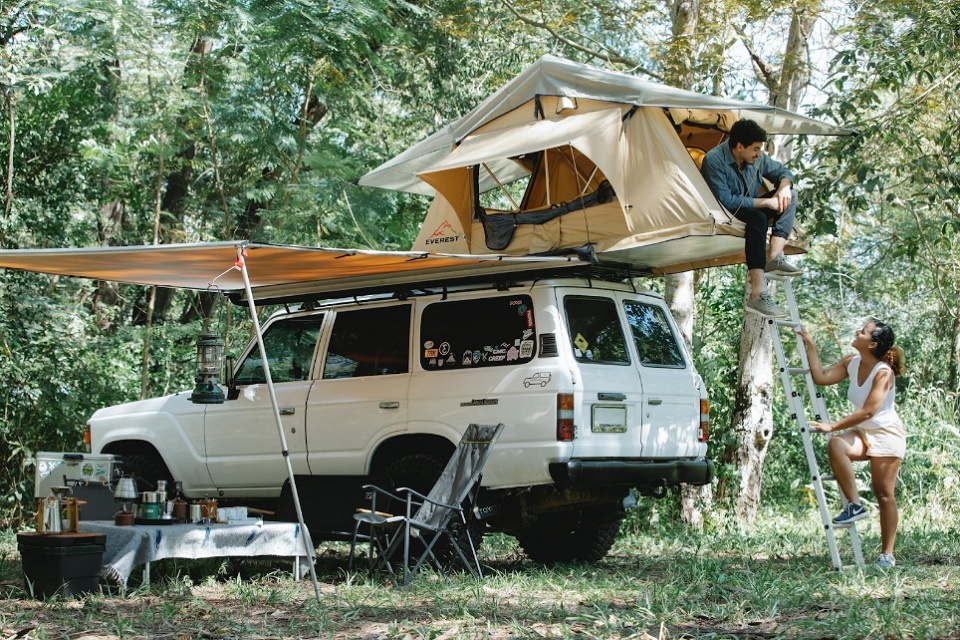Imagine you’re deep in the heart of a dense forest, surrounded by nature’s serene beauty. As dusk settles in, you find yourself in the comfort of your 4×4 vehicle, yearning for a good night’s sleep. This is where rooftop tents come into play.
Roof tents offer an elevated camping experience that brings you closer to nature while providing the convenience and security of a comfortable shelter. However, it’s crucial to prioritise safety when using rooftop tents for off-road adventures. Let’s explore the important considerations to ensure a secure and enjoyable experience.
1. Secure Installation
Before embarking on your off-road journey, ensure that your roof tent is installed correctly and securely. Check the manufacturer’s guidelines and follow them meticulously. Double-check all fastenings, brackets and mounting points to avoid any mishaps during the expedition.
2. Weight Capacity
Consider the weight capacity of your vehicle’s roof rack and roof tent. Exceeding the recommended weight limit can strain your vehicle, affecting its stability and handling. Make sure the roof rack and tent’s combined weight is well within the capacity specified by the manufacturer.
3. Weather Conditions
Mother Nature can be unpredictable, and this might be evident during off-road adventures. Choose a rooftop tent that is weather-resistant and can withstand harsh conditions like heavy rain, strong winds and extreme temperatures. Look for tents with durable materials, reinforced stitching and robust zippers to ensure your safety and comfort.
4. Sturdy Ladder
Most roof tents come with a built-in ladder for easy access. Check that the ladder is sturdy and in good condition before each use. Ensure it’s properly attached to the tent and provides a stable platform for climbing in and out.
5. Vehicle Weight Distribution
Consider how the addition of a rooftop tent affects your vehicle’s weight distribution. It can significantly alter the centre of gravity, potentially impacting vehicle stability. Drive cautiously and be mindful of the vehicle’s handling characteristics, especially during sharp turns and off-camber situations.
6. Campsite Selection
When choosing a campsite, find level ground to park your 4×4 vehicle and set up your rooftop tent. Avoid slopes or uneven terrain that can compromise stability and cause discomfort during sleep.
7. Wind Resistance
Rooftop tents can be vulnerable to strong winds. Look for models with aerodynamic designs and low-profile profiles, minimising wind resistance and enhancing stability. Furthermore, consider using guy lines or wind deflectors to further secure the tent during windy conditions.
8. Inspect Regularly
Perform regular inspections of your rooftop tent, checking for any signs of wear and tear, loose fittings or damage. Address any issues promptly to maintain the safety and longevity of your equipment.
Conclusion
When it comes to off-road adventures and roof tents, safety should always be at the forefront. From ensuring proper installation and weight capacity to considering weather conditions and wind resistance, each aspect plays a crucial role in providing a secure and enjoyable camping experience.
Prioritise safety, embark on your off-road adventures with confidence and let the rooftop tent elevate your connection with nature. Remember, the journey to your destination should be just as safe and memorable as the destination itself.
Safeguard your off-road adventures by adhering to these important considerations for rooftop tents. Sleep under the stars, surrounded by nature’s beauty and wake up refreshed for the next thrilling chapter of your 4×4 journey.



